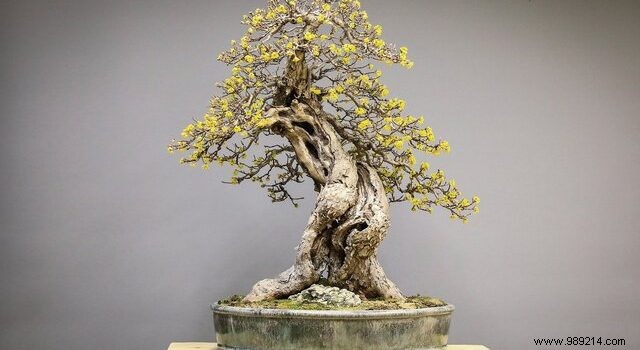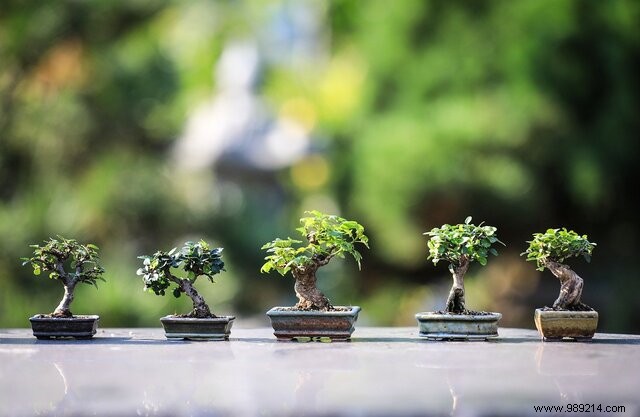
Bonsai is the Japanese art of growing trees in pots, which combines both horticultural techniques to preserve a miniature tree, but also aesthetic concepts related to Japanese culture. So why start growing bonsai? Because it will make you discover much more than just growing green plants in pots.
We live more and more in the city, with smaller and smaller gardens that are often limited to a patch of lawn and a few neglected shrubs. A bonsai is a real tree that grows in a pot, it is not a particular species that will remain dwarfed.
No, it is possible to create a bonsai with almost any tree or shrub that grows near your home.
Since they stay small, you can more easily see them evolve. You will see the buds open in the spring, the twigs lengthen to give new leaves, which will then change color in the fall and then fall.
When you take care of your bonsais on a daily basis, you will be reconnected to the cycle and change of nature, when you hardly notice it anymore with the trees planted around your corner.

The height of a bonsai varies from about ten centimeters to almost a meter high. In practice, most hobbyists grow trees that fall into one of the following categories:
So you don't need a lot of space to start a bonsai collection. A corner of the garden, a terrace, and even a balcony allow you to embark on this new practice.
Bonsai lovers (known as BONSAIKA) are not satisfied with having a single species, but on the contrary take advantage of the small size to diversify their collection, with Japanese maples, pines, azaleas, elms , but also local trees such as hornbeams, oaks, beeches, etc.
A bonsai does not strictly resemble a tree in nature. Sometimes it doesn't even resemble what is in nature at all. For example, a juniper or an azalea will naturally have a bushy habit while it will be represented in the form of a tree with a clear trunk in bonsai.
Why ? Because the bonsai is not a mimicry of nature, it is an evocation of nature, of what is most beautiful.
From an aesthetic point of view, you will notice that it only takes a few branches to form a bonsai. Simplicity is key, and it refers to a typically Japanese concept called WABI SABI.
Empty spaces also hold an important place in the aesthetics of a bonsai. The Japanese say that "a bird must be able to cross the tree without touching the branches".

What makes a bonsai emerge from a tree is not only the implementation of techniques. You can sometimes see artists covering the branches with aluminum or copper wires, twisting the branches strongly to position them in the desired place.
These techniques are sometimes extreme and do not reflect the art of bonsai, which must be done above all with respect for the tree. It's not sculpture, we work on the living, and it's always the tree that decides where it wants to go.
Bonsai is not an immediate art, it is even said that it is a school of patience. Because what makes a bonsai is the application of good maintenance and pruning techniques, for years. Sometimes even decades.
The practice of bonsai allows you to savor the passage of time and every little change.
Large surfaces or garden centers offer many small potted trees at low prices. But these are often trees imported from Asia that are not adapted to our local climate. This is why they are often considered (wrongly) as indoor bonsai, because they do not support frost.
We advise you instead to get closer to real professionals who grow bonsai from endemic trees, which grow naturally in France. There are not many left, and the reference remains the Bonsai Nursery of Jacques Galinou which for more than 30 years has been forming trees from seedlings or cuttings with the aim of making bonsais.
The advantage of getting closer to a local producer who does not only base his activity on imports, is that the trees have grown for years in France. They are therefore perfectly acclimatized and you can install them in your garden without seeing them wither after a few days.
How many of you have bought a bonsai in the supermarket, and seen its leaves turn yellow and then fall off after a week? They are sold as consumer goods, whereas they are living beings just waiting to be adopted and cultivated.
John Naka, a famous Japanese-American artist said, "To make a bonsai, all you need is a pair of scissors and lots and lots of love".